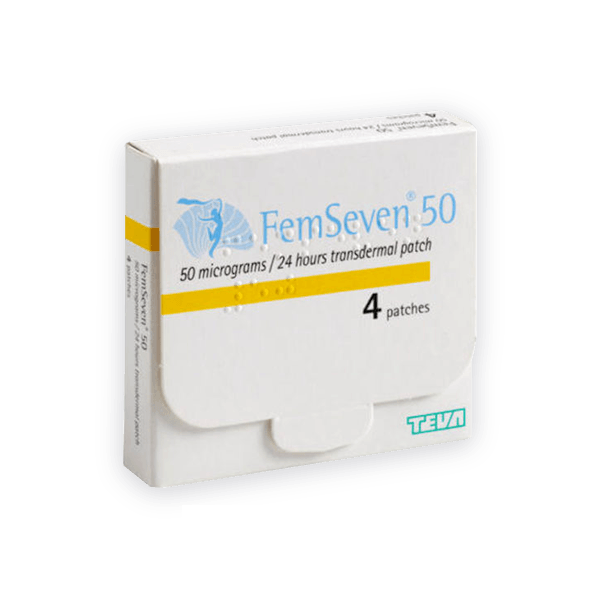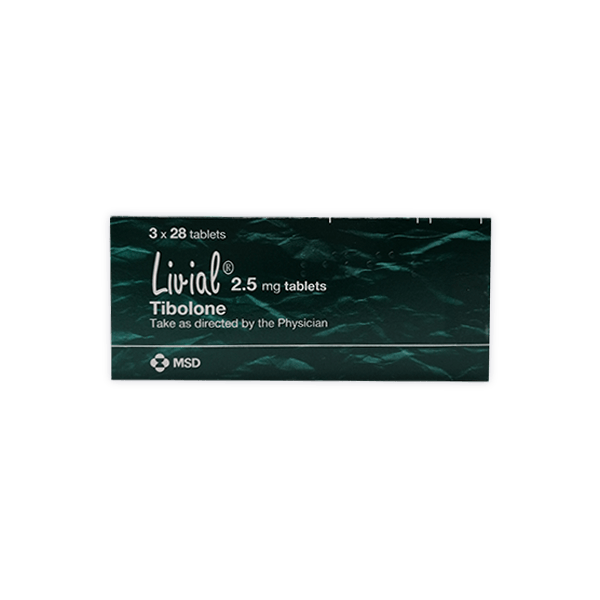
What is HRT?
HRT stands for Hormone Replacement Therapy. It’s a hormonal treatment that can help to alleviate the symptoms of menopause, such as hot flushes and night sweats. As the name suggests, the therapy works by replacing hormones in the body – in particular, the hormones oestrogen and progestogen – which naturally decline during menopause. Want to find out more? Check out our articles on ‘Does HRT make you look younger?‘ and ‘HRT side effects and results‘.
Before we start getting in-depth on HRT, it’s important to take a closer look at what we call the menopause. What is it, how does it affect the body, and why are so many women turning to this treatment for help?

The Menopause Explained
To put it simply, menopause occurs when a person stops menstruating (having periods) and can no longer become pregnant naturally.
The menopause is a natural process of ageing. The ovaries begin to lose follicles, which reduces the levels of the hormones oestrogen and progesterone in the body. Once all follicles are lost, the body is no longer able to menstruate or become pregnant [1].
To be clear, when we talk about treating the menopause, we aren’t talking about preventing it! Menopause is not a medical condition per say, but a natural biological change or time in a woman’s life caused by ageing. The menopause can be brought on by other factors, but this is less common.
The median age for menopause is thought to be around 51 years of age, but it can happen anytime between 45 to 55 years of age.
In a technical diagnosis for menopause, periods would have stopped for a minimum of 12 consecutive months. But that is talking about the menopause in the absolute sense. In truth, many women will experience signs and symptoms of menopause well in advance, ranging from months to years.
Perimenopause and Early Menopause
For some women, the menopause can come on suddenly. But for many, it seems like a more gradual process, with noticeable changes occurring years in advance. This stage is known medically as the perimenopause (“around menopause”) – the time in a woman’s life in which the body is transitioning towards the menopause.
Generally marked by a drop in oestrogen, perimenopause can lead to a variety of changes to menstruation, such as:
- Period irregularity
- Periods being heavier, or lighter, than normal
- Intensified premenstrual syndrome
Perimenopause shouldn’t be confused with premature menopause [2], in which women undergo menopause under the age of 45. This can occur in around 1 in 100 women, and it can be genetic or caused by external factors, such as radiotherapy, chemotherapy, or a hysterectomy that removes the ovaries[3].
What Are The Symptoms of Menopause?
If the menopause is simply a natural process that occurs with age, why do many women look for medical help? It’s because women going through the menopause can experience a wide array of symptoms as they undergo hormonal changes. In some cases, these symptoms can start to have a negative impact on women’s day-to-day lives.
The symptoms can vary between individuals, but more common effects include:
- Hot flushes
- Night sweats
- Vaginal dryness
- Discomfort during sex
- Difficulty sleeping
- Low moods
- Lowered libido
- Problems with memory and concentration (“brain fog”)
These symptoms can present during perimenopause, and will sometimes persist after your last period.
How Does HRT Work?
Hormonal changes are the primary cause of these menopausal symptoms. Here’s where HRT comes in. By replacing hormones like oestrogen and progestogen that are reaching low levels in the body, HRT helps to alleviate these symptoms by providing more hormonal balance. For women whose symptoms are particularly severe, HRT can lead to serious quality of life improvements.
HRT can also help prevent the weakening of the bones (osteoporosis), a condition that becomes more common in women who have gone through menopause.
Types of HRT
Every woman is different, which is why HRT isn’t a “one size fits all” treatment. It’s something you’ll need to talk to a medical professional about, so they can identify the right form of hormone therapy for you.
Broadly speaking, HRT can be divided into pure oestrogen treatments (‘oestrogen-only’), or treatments which use both oestrogen and progestogen (‘combined HRT’).
Most women take combined HRT, with oestrogen-only HRT typically being reserved for women without wombs (for example, women who have undergone a hysterectomy), or in women who have had an IUD fitted. This is because an oestrogen-only treatment can increase the risk of cancer in the womb. Thankfully, combining it with progestogen essentially eliminates this risk.
HRT treatment routines can also differ. For women who are still having periods, cyclical HRT is recommended. In cyclical HRT, oestrogen is taken daily, which is then combined with progestogen during the last 14 days of the menstrual cycle.
Another routine is continuous combined HRT, which is intended for postmenopausal women who will no longer menstruate. In this case, the hormones are simply taken daily, with no breaks.

Is HRT an Effective Treatment?
When administered under the guidance of a medical professional, and the treatment followed as prescribed, HRT can be very effective at reducing unpleasant menopausal symptoms.
HRT is probably the most commonly prescribed treatment for menopausal women. It’s widely offered on the NHS, and the National Institute for Health and Care Excellence recommend it after a thorough discussion with a GP [4].
As we’ve seen, HRT can involve different hormones and different routines, and comes with a range of benefits but also risks. If you do decide to start HRT, you may start on a low dose or try a test run of 3 months to see if it reduces symptoms.
When Should Women Start HRT?
Women who are under the age of 60 and within 10 years of the onset of menopause are likely to experience the full benefits of HRT.
Basically, if you start to experience menopausal symptoms within that age range, feel free to consult a doctor about the possible courses of HRT that might be suitable for you.
The Risks of HRT
Any medical treatment comes with risks and side effects you’ll need to know about before starting. This is particularly true of HRT. Various studies have identified potential health risks from HRT over the years. Recently, the evidence has seemed to favour the benefits of HRT over the risks. Still, it’s important to stay informed. So, what exactly are the risks?
We’ve already seen that oestrogen-only HRT can increase the risk of womb cancer, but combined HRT exists to mitigate that. Naturally, the risk is also removed for women without wombs.
What about ovarian cancer? According to the NHS, it’s not clear to what exact extent HRT increases ovarian cancer risk. Apparently, a recent study reported that for every 1,000 women taking HRT for 5 years, there will be an additional case of ovarian cancer [5]. The increased risk is thought to disappear once the treatment stops.
There is an increased risk of breast cancer for women taking HRT. The risk is linked to all types of treatment, but it is lowest with oestrogen-only and highest with combined continuous HRT. The risk also increases with time, so taking HRT for under a year seems to carry little to no increased breast cancer risk.
Perhaps the most significant risk increase is with blood clots. However, menopausal women are already at very low risk of developing blood clots, so even with a significant risk increase due to HRT, the chances still work out low. Plus, the blood clot risk only seems linked to tablets – there is no risk increase from patches or gels.
Many women find the benefits of HRT to outweigh the potential risks. As always though, it’s your health, your choice. The important thing is that you’re in control, and can make your own decisions alongside the advice of a medical professional.
Tablets and Patches
So now we know how HRT works, the benefits and the risks, you might be wondering: how do I actually get those hormones into my body? Well, two common options are tablets and patches.
Tablets are pretty straightforward. It’s a tablet, either oestrogen-only or combined, taken once daily. These are not generally available online.
Skin patches are a common alternative, and can be ordered through online pharmacy services like e-Surgery. Simply place them onto your skin, replacing them at least twice a week – often this will mean that one patch is on for three days and the next patch for four days. Rather helpfully, skin patches bypass any indigestion side effects and don’t increase the risk of blood clots.
Let’s take a look at some examples.
Evorel Patches
The Evorel Patch is a form of hormone replacement therapy (HRT) used by women who are experiencing side effects of menopause. The active ingredient in Evorel Patches is estradiol.

FemSeven Patches
FemSeven patches are a hormone replacement therapy (HRT) that come in 50, 75, and 100 mcg options (as well as a Conti and Sequi version) to relieve symptoms of menopause.

Livial (Tibolone) Tablets
Livial Tablets are a hormone replacement therapy (HRT) containing tibolone, this medicine is used to relieve symptoms occurring after menopause.

To find out more about the different menopause treatments available from e-Surgery check out our menopause treatment category page.
Can I Buy HRT Treatment Online?
Yes, HRT treatments are available for prescription online – that includes both combined and oestrogen-only treatments. For a full list of HRT treatments go to the HRT treatment page at e-Surgery.
Make sure to order your HRT Treatment through UK licensed and woman-led online pharmacies such as e-Surgery. There’s no need to suffer from hot flushes, disturbed nights, or low moods when HRT is just a click away, delivered in our discreet and recyclable packaging straight to your front door. If you’ve got questions about the benefits and risks of HRT, make sure to use our Ask a Pharmacist service – we’re ready to handle any questions you may have about your treatment.
Sources
- Your Hormones Glossary | Your Hormones
- Early Menopause | NHS
- Hysterectomy Overview | NHS
- Menopause: Diagnosis And Management | NICE
- Risks: Hormone Replacement Therapy | NHS
Further Reading
- HRT Benefits and Risks | Women’s Health Concern
- Types of Hormone Replacement Therapy | NHS
- Menopause Patch Facts | Healthline









